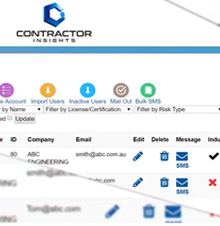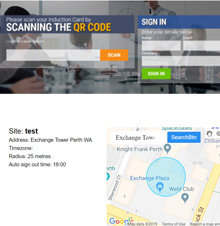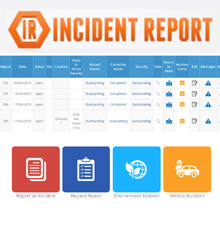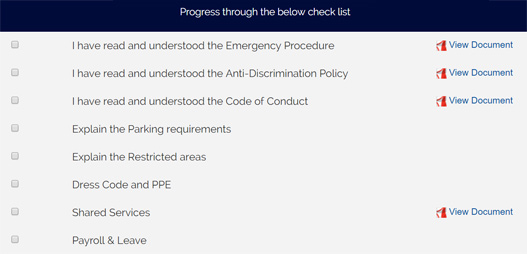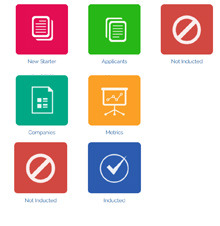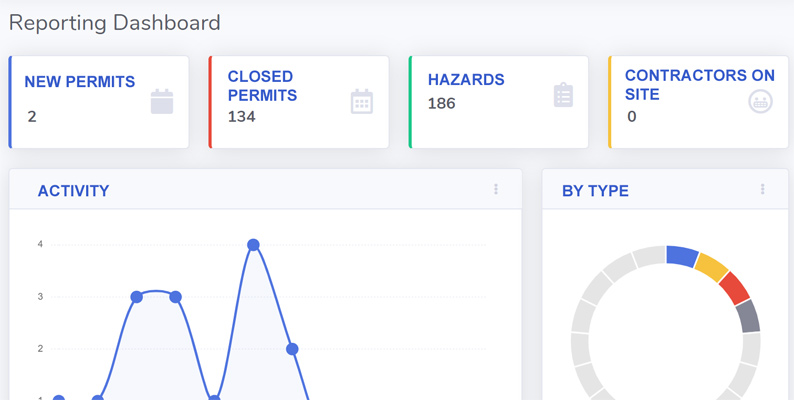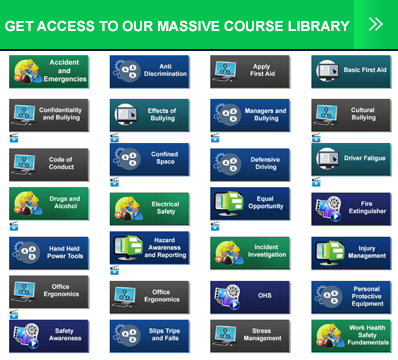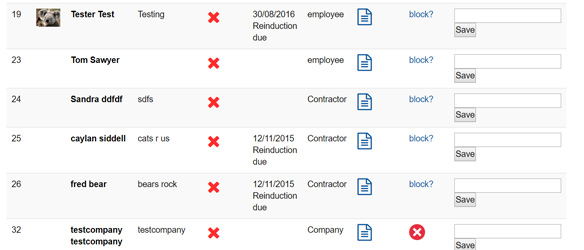Induction Check List
Best induction checklist templates, tricks, tips and reviews
Online Induction >> Induction Checklist
Published 25/08/2025
 An induction checklist is a well-detailed guideline outlining the activities lined up for the new employee or contractor, to ensure timely coverage of the induction process and to avoid omission or duplication of information. It is a critical tool that has proven to be efficient over the years. Typically used for safety / WHS induction checklists.
An induction checklist forms part of the overall new employee induction, contractor induction or visitor induction.
An induction checklist is a well-detailed guideline outlining the activities lined up for the new employee or contractor, to ensure timely coverage of the induction process and to avoid omission or duplication of information. It is a critical tool that has proven to be efficient over the years. Typically used for safety / WHS induction checklists.
An induction checklist forms part of the overall new employee induction, contractor induction or visitor induction.
The process of starting a new job can be daunting for many people. Interacting with new people, systems and company culture can be overwhelming at first. Most organizations have formulated comprehensive induction programs to ensure smooth transitioning of new employees into their new working environment. An induction checklist comes in handy to facilitate induction.
A properly laid out checklist should indicate when and where the activities should take place, the person to conduct each operation; with provision for comment section to record the progress of each step.
An induction checklist might be one of many steps a contractor, employee or visitor goes through during a safety induction or site induction.
There are many different types of induction checklists, from staff, contractor, site and role based ones through to risk based induction checklists. Have a look at a list of common induction checklist types right here.
Objectives of an Induction Checklist
Induction checklists vary depending on the employee or contractor role type. They might be done for new staff or contractors when starting their role or a follow on process triggered at week 1, month 1 or annually for checking off additional post day 1 workflows and workplace / safety checks. For example, what you put in a new employee induction checklist would vary to what you do for contractors or even visitors. See what is an induction check list and why do you need one?Commonly the objectives include;
- To give the new hires and new contractors an overview of what the company or organization is about, its history, values and vision, structure, facilities, and objectives both long-term and short-term.
- For new employees, to ensure a faster transition for the new employee; this will enable the employee to become productive in their work quicker.
- For contractors and employees it gives an overview of the company policies and procedures, operational methods, company products, and services, etc.
- To ensure both employees and contractors go through and understand critical safety materials before they start their job task or activity.
- To ensure visitors or volunteers are aware of important pre-arrival and pre-start items before they enter a workplace as a visitor or begin their volunteer role.
- Easy access and acknowledgement of site plans, evac plans, location of emergency equipment or exits, muster points, roof access, anchor points or other important site specific safety knowledge.
QR Code Induction Checklist for Staff Inductions
One popular way to distribute a staff induction checklist is via QR code. Obviously this is also a method for other types of induction checklists too (contractor, safety etc). The idea is that you can print out a QR code poster and contractors or staff simply scan it to bring up the induction checklist. This might be especially helpful for situations like a pre-start checklist or some sort of check you want to ensure is carried out before a job task or activity is undertaken.Other uses might include:
- Checklist for managers as part of a new starter process
- Contractor checks to ensure they go through the induction checklist before starting their job task or activity
- Visitor checklists for consultants and other visitors arriving at the workplace
Try this example Induction Checklist by scanning the QR code below:
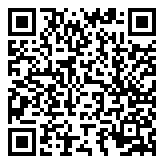
Common Induction Checklists and Example Checklists
Commonly these inducton check lists are setup and used by organisations: Safety Induction Checklist
Safety Induction Checklist New Employee Induction Checklist
New Employee Induction Checklist Contractor Induction Checklist
Contractor Induction Checklist Induction Training Checklist
Induction Training Checklist Staff Induction Checklist
Staff Induction Checklist Site Induction Checklist
Site Induction Checklist New Vendor Checklist
New Vendor Checklist Hotel Induction Checklist
Hotel Induction ChecklistIn the workplace, induction checklists are an essential tool for ensuring that new employees are properly familiarized with their job responsibilities and company regulations. By going through these checklists, not only can employers ensure that every employee is on the same page about expectations, but they can also help employees better understand their roles and how to do them. So, what are some common induction checklists used in the workplace?
One of the key components to successful induction is having a comprehensive checklist that covers all of the important information related to the job. This could include topics such as safety protocols, training requirements, policies and procedures, and any other relevant information that new employees need to be aware of. Additionally, induction checklists should be tailored to both the role in question and its specific needs. This way, employers can ensure that each employee receives all of the necessary onboarding essentials.
Organizations should make sure they review their induction checklist regularly and update it accordingly as business operations change or new processes are introduced. This will not only keep everyone up-to-date but it will also give employers peace of mind knowing that everything is accounted for when onboarding new personnel. By implementing a thorough induction checklist system into your organization's workflow you can help ensure smooth transitions for both old and new staff alike.
Importance of an Induction Checklist
 Induction checklists are tools to hel make it easier to prepare new employees or contractors. During the induction processes, a new hire training checklist helps ensure the right materials, steps, policies, procedures and workflows are actioned.
Induction checklists are tools to hel make it easier to prepare new employees or contractors. During the induction processes, a new hire training checklist helps ensure the right materials, steps, policies, procedures and workflows are actioned.
- Reduces anxiety: having a list enables the new employee to know what to anticipate hence reducing any jitters and anxiety.
- Easy monitoring: the checklist entails all the areas to cover throughout the induction process, it is easy to keep track of the progress and avoid omission or duplication of relevant information.
- Proper planning: a well-structured checklist is meant to ensure the smooth running of the induction process.
Induction checklist for different staff roles
 The most common staff role types you would set up an induction checklist might include Contractors, Employees and Visitors and then the specific job role types that fit under those categories such as maintenance contractors, cleaning contractor, security through to part time or full time staff roles.
The most common staff role types you would set up an induction checklist might include Contractors, Employees and Visitors and then the specific job role types that fit under those categories such as maintenance contractors, cleaning contractor, security through to part time or full time staff roles.
Visitor Induction Checklist
A visitor induction checklist is designed to be a short and simple induction list of acknowledgements to ensure that a visitor arriving on site has acknowledged and understood important safety policies, procedures, safety information and emergency evacuation details.
Contractor Induction Checklist
A contractor induction checklist might cover more comprehensive acknowledgements such as checking permits and procedures for the contractors work on site as well as acknowledgement of common job or role specific policies and procedures on site, site access materials, safety information, how to report an incident, a hazard and emergency procedures.
Employee Induction Checklist
An employee induction checklist is all about being job ready, they are a new employee joining your organisation and are they going to be job ready? Checklist items such as do they have an account setup, havethey provided their employee contract, has a line manage follow up been set, have they done the employee induction, are they onboarded into the department?
Company Induction Checklist
A company induction checklist is more about onboarding a new supplier and ensuring they have gone through a vendor or contractor prequalification as part of your contractor management system.
Important Things to Include in a New Employee Induction Checklist
 The activities and details listed in an induction checklist vary from organization to organization depending on the complexity and size of the company. Below, we shall discuss a few of the things that make up a standard induction checklist, shall we?
The activities and details listed in an induction checklist vary from organization to organization depending on the complexity and size of the company. Below, we shall discuss a few of the things that make up a standard induction checklist, shall we?
1. Employee's personal information:
This section includes the name of the employee, job title, staff ID number, start date of the induction, etc.
Some checklists also include a detailed list of all paperwork to be compiled and submitted to the human resource personnel.
2. First day activities:
Being familiarised with your surroundings and the people around you is crucial on the first day of work.
It is with this regard that the new employee should meet the team members and manager, get assigned a workstation, issued with passkeys and given a tour of the organization's facilities.
3. Introduction to the company:
Conducted within the first week of joining the organization.
The new employee learns the company's history, values, management style, goals and objectives, products and services, organizational structure and interactions between different departments, etc.
4. Introduction to the new role:
Here, the employee will get insights on how they fit into the organization, how their contribution will integrate into the company's practices, departmental goals, and priorities.
- Terms of employment such as pension information, working hours, overtime requirement, lunch/tea breaks, covering shifts for an absentee colleague, etc.
- The performance review criteria.
- Training and workshop schedules.
- Terms and conditions of the probation period where applicable.
Organization's code of conduct on performance, discipline, absenteeism, policies against bullying and harassment.
Other relevant information such as Office dress codes, operating procedures and use of company resources such as telephone, emails, and internet. Policies for annual, maternity, and paternity leaves, etc.
5. Health and safety measures:
New employee to attend training to learn the company's Health &safety policies and procedures.
These include safety measures, and precautions, evacuation routes in case of emergency, the location of fire extinguishers, first aid station, etc.
6. One month review:
The employee will have a one on one meeting with the line manager to evaluate how they are adjusting to their role and evaluate whether there is a need for training.
At this juncture, the employee can give feedback and concerns about their job.
They may discuss the availability of employee representation such as union membership if available.
7. Three-month review:
The line manager holds further discussions with the employee to review performance, pinpoint areas of improvement and set reasonable deadlines for further analysis if necessary.
Adjust work targets if the employee is up to speed.
8. Six-month review:
If the employee was on probation, this is the point to decide whether to retain or release them. If hired, it's time to set objectives for the next six months. Further training may be needed depending on the job.
9. Twelve months review:
By now the employee is already entirely settled and should be working at par with the rest of the team. You may ask them to give feedback on the induction process, what they think worked well and what they feel needs improvement.
10. Acknowledgment:
Here the new employee and the supervisor append their signatures to acknowledge the successful completion of the induction process and the checklist then included in the employee's personnel file for record.
Tips for Designing an Objective and Result-Oriented Induction Checklist
- Set realistic timelines: do not overwhelm the new employee with too much information at once, proper induction process takes time and patience.
- The checklist should be clear and precise: instructions should be straightforward and easy to follow through.
- Encourage feedback at the end of the induction process: It is a great way to review and improve the process.
Having a well-structured induction checklist will significantly contribute to the success of an induction. Remember, the success of an induction program majorly adds to an employee's attitude towards the organization and their motivation to work.
Induction Form
Sometimes an induction form is used as an induction check list to capture specific licenses, tickets or other evidence of training. Induction forms can be used to capture materials and even be triggered to managers to complete in order to check off that they have completed specific steps as part of an induction workflow.Risk Based Induction Checklists
Often you'll have different induction checklists due to different risks that an inductee will be exposed to. A high risk contractor might go through a far more extensive induction checklist if they are going to be working in high risk environments or undertaking work tasks involving high risks such as confined spaces, elevated work platforms, electrical, asbestos removal and more. Their checklist needs to cover a far more extensive and comprehensive set of requirements as part of those risks. A low risk contractor by contrast might only go through a smaller checklist that covers safety, policies and procedures relevant to their role, site or job activity.Different Workplace Checklists following Induction Form
A common setup in an induction plan might be to start with an induction form to capture important details such as licenses, next of kin, evidence of training, HR information if a new starter or insurances if a contractor and following on from that, introduce a series of induction check lists to progress through covering important safety, HR, risk and hazard awareness topics. There may be policies and procedures to acknowledge and understand per check list and different workplace checklists if working at different work sites.Try out the different Workplace Induction Checklist templates below:







